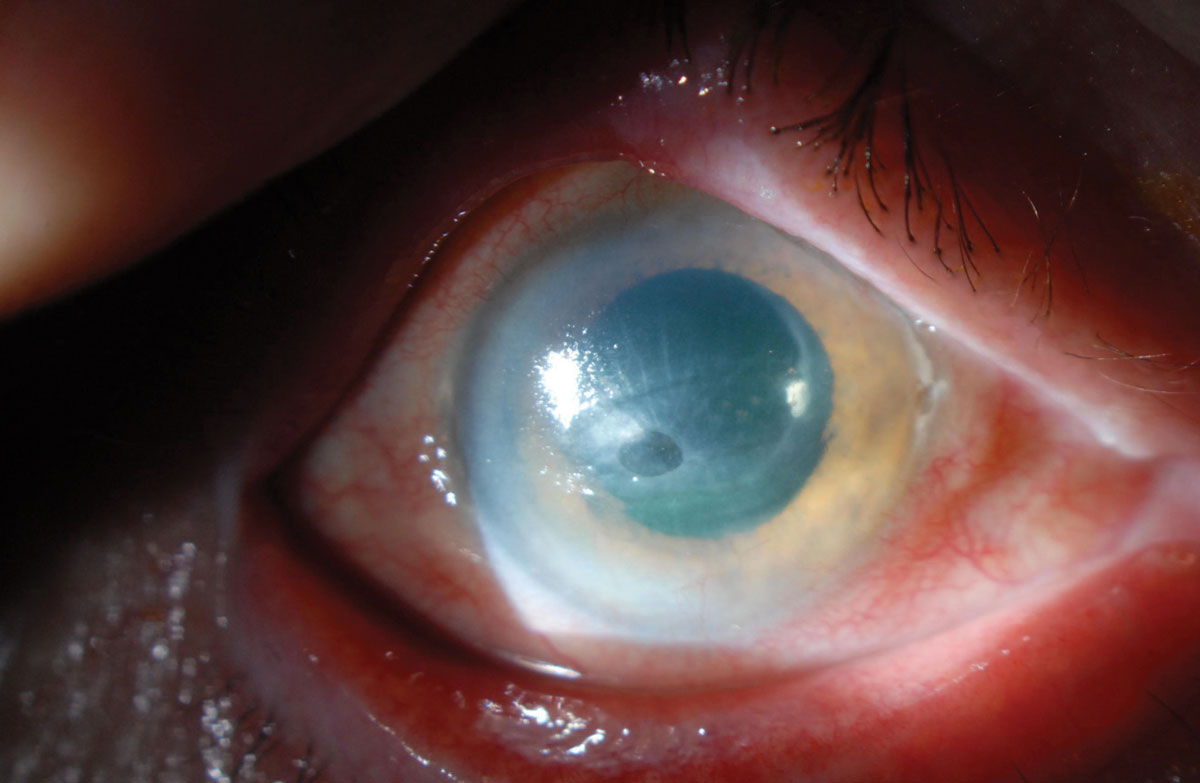 |
| Pain intensity, depression and PTSD were strongly correlated in this study. Photo: Christopher J. Rapuano, MD. Click image to enlarge. |
Chronic pain conditions are notoriously difficult to manage, as pain is highly subjective and can be influenced a host of factors, including mental health and quality of life. Neuropathic corneal pain (NCP), in particular, presents a challenge for eye care providers. For one, the diagnosis is complex. For another, topical treatments don’t always work and there’s currently a lack of specific systemic treatments without controversial side effects. Antidepressants and gabapentinoid drugs are sometimes used, and long-term opioid therapy isn’t recommended. Clinical signs and symptoms also rarely correlate.
To learn more, researchers investigated quality of life, mental health and corneal morphology in patients with NCP without significant ocular surface disease. They reported strong associations between pain intensity and mental health, and also noted that using both questionnaires and imaging may help to distinguish nociceptive and neuropathic pain.
Researchers administered a composite questionnaire to 228 subjects to assess their pain intensity, duration and quality (modified from the Self-Administered Leeds Assessment of Neuropathic Symptoms and Signs and Pain Detect questionnaires). Patients with a diagnosis of possible central NCP and two sub-groups of patients with peripheral ocular pain completed additional questionnaires on mental health and underwent in vivo confocal microscopy.
A total of 53 of 76 patients who reported chronic ocular pain were classified as having probable NCP. Nine patients without signs justifying pain who didn’t respond to topical anesthesia were deemed affected by central NCP. In this group, the researchers observed significant negative correlation between presence of pain and the mental component of quality of life, and a positive correlation between pain severity and presence of PTSD and depression. There was a higher frequency of neuromas and sprouting in the central NCP group than the control groups, but this difference wasn’t significant.
“Multiple pathologies (not only dry eye disease) associated with complex eye pain patterns reflect the high complexity of the ocular pain system,” the researchers wrote in their Eye paper. “Since it’s difficult to associate painful symptoms with clinical signs, it’s recommended [that clinicians] thoroughly evaluate pain quality using multiple questionnaires including those for the mental health and impact on quality of life, and objective instruments such as in vivo confocal microscopy and corneal esthesiometry.”
They concluded that taking a multidisciplinary approach that includes pain management specialists and specific drugs for general neuropathic pain will help to arrive at the most suitable therapeutic strategy.
Leonardi A, Feuerman OM, Salami E, et al. Coexistence of neuropathic corneal pain, corneal nerve abnormalities, depression, and low quality of life. Eye (Lond.) 2023. [Epub ahead of print]. |

